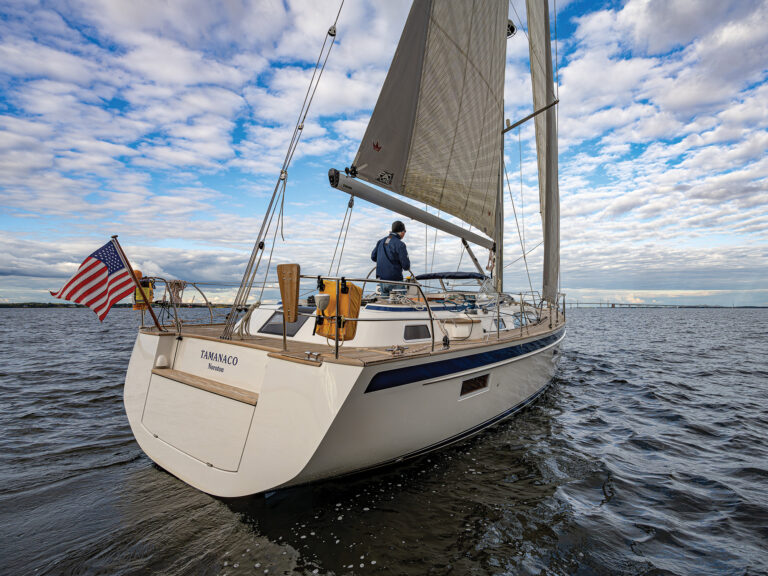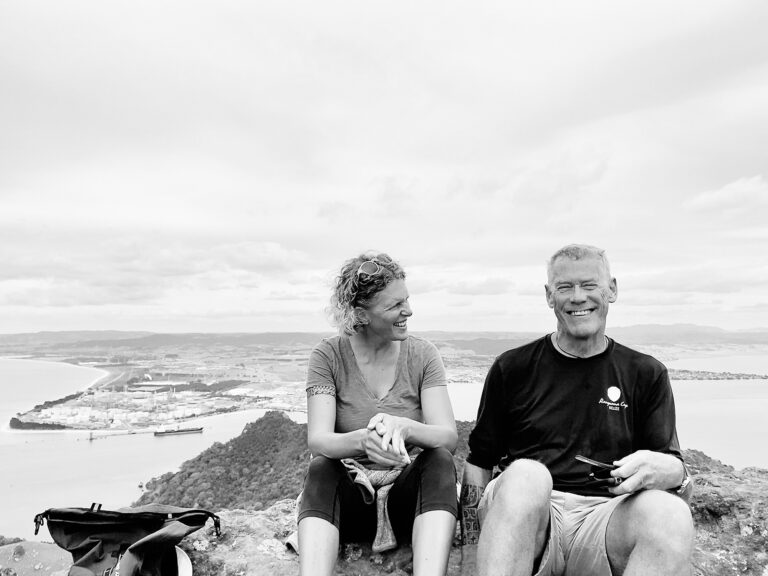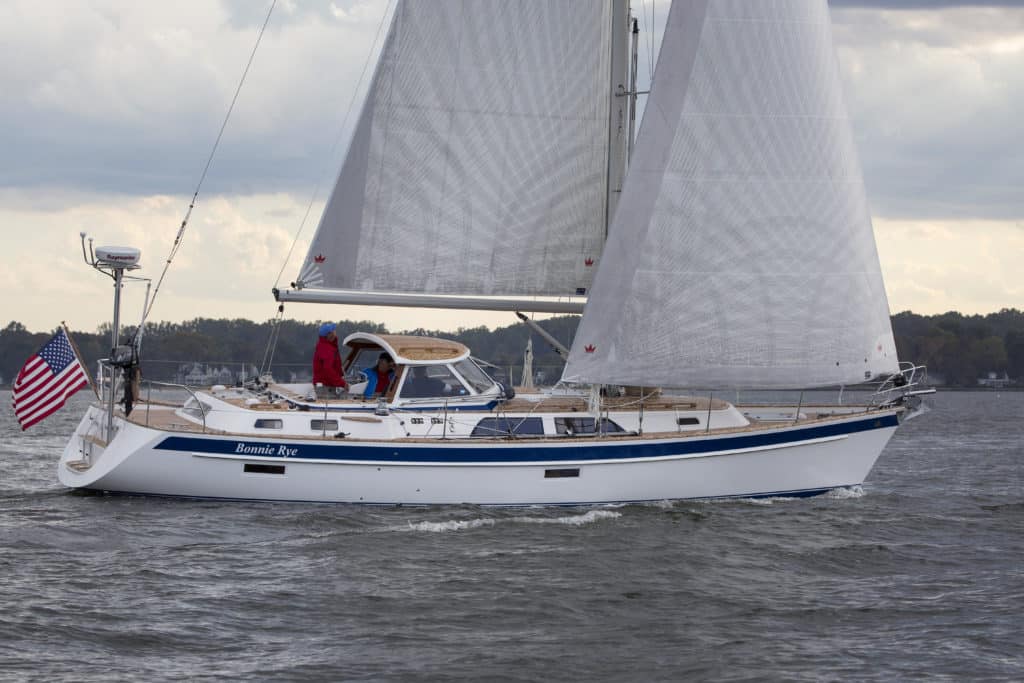
There’s a lot to love about today’s big and beamy sailboats. Sporty twin helms open up the cockpit, overhead arches keep sheets out of the way of lounging crew, and down below, the hard chines that are de rigueur in current design thinking provide interior volume that lets you live and entertain as comfortably on the water as you do at home.
Still, I have to admit my heart fluttered a bit when I stepped aboard the Hallberg-Rassy 43 Mk III. It is, after all, quite traditional by design, though it’s built using the very latest materials and outfitted with top-of-the-line gear and hardware. Covered with an abundance of teak abovedecks and rich, warm mahogany below, the HR 43 is lovely to look at and lively to sail. More on that in a moment.
The 43 was designed by longtime HR collaborator Germán Frers.Hallberg-Rassy built nearly 200 of the earlier versions of the boat prior to the launch of the latest iteration at last fall’s U.S. Sailboat Show in Annapolis, Maryland. Updates reflect elements the Scandinavian builder has incorporated into several of its other models, such as the HR 48, 55 and 64. Portlights have been added to the hull to let in more light, and seven of the boat’s 12 hatches open to let in plenty of air down below. In the well-equipped galley, counter space has been increased slightly. By adjusting the width and placement of the cockpit coamings above, the builder added headroom in the passageway between the sit-down nav desk and the owner’s cabin aft. And speaking of the aft cabin, a buyer can now choose between a centerline queen berth and portside sofa, or a double berth to starboard and a single sea berth to port.
With the latest design, owners have a choice of full-batten mainsail or in-mast furling main with vertical battens (which the boat in Annapolis had); the standard 6-foot-7-inch lead keel or a shallow-draft 5-foot-7-inch foil; and bow and stern thrusters for easier close-quarter handling.
On his Boat of the Year entry form, builder Magnus Rassy described the 43 as able to “go anywhere, anytime, for up to four people.” But really, this is primarily a couple’s boat that features a comfortable forward cabin for two occasional guests. The L-shaped dining area to port in the saloon is big enough for friends but intimate for two. Opposite, a pair of captain’s chairs would be ideal for a relaxing evening spent reading, though they can be replaced with a settee for an additional sea berth.
With the requirements of a sailing couple in mind, I would say that on the day of our sea trial, with a half-dozen people aboard, the center cockpit felt tight at times as the Boat of the Year judges and I moved about to trim sails and take our turns at the wheel. But that same space would likely feel just right for two people clicking off the miles. Standing watch under the hard dodger and behind the fixed windscreen would certainly be pleasant on a damp, breezy night. The wide wheel allows the helmsman to sit to either side to see past the dodger.
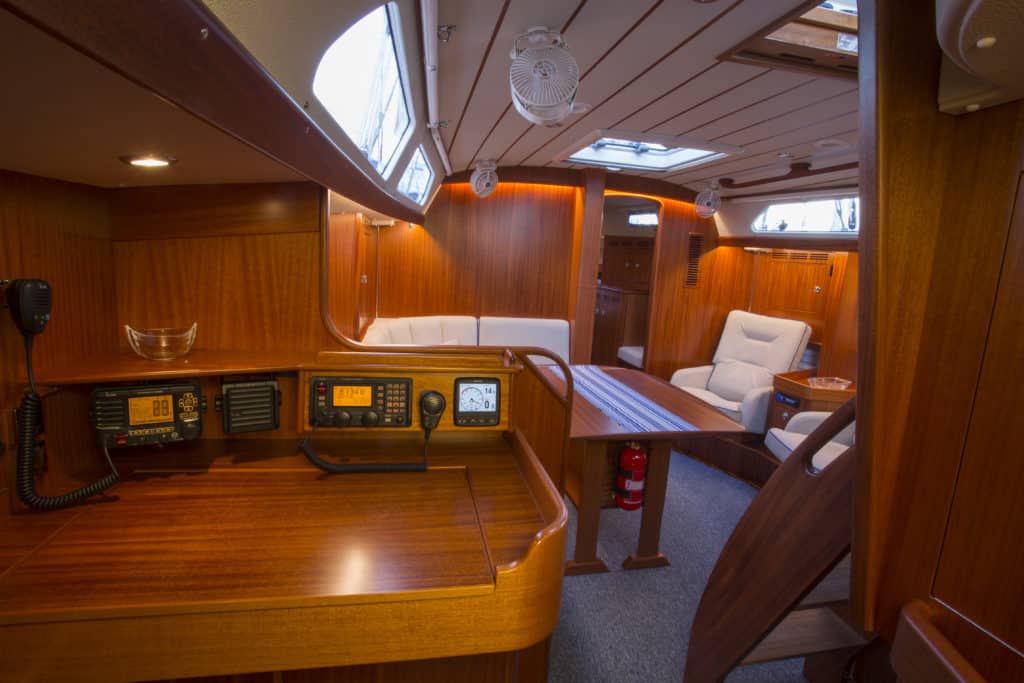
Winches for the double-ended mainsheet are close at hand on the deck, just aft of the helm station; the jib-sheet winches are located just forward of it. If I were buying the boat, I would opt for the standard pedestal; the owner of the boat we sailed chose a wide one that made moving around it somewhat awkward. I’d also consider a folding wheel to make going forward and below easier while at anchor.
Wide teak side decks and solid bulwarks, also capped with teak, ensure solid footing when moving about on deck; handrails on top of the dodger and running the length of the cabin top were an added bonus.
Hallberg-Rassys are bred for the chilly waters of northern Europe. The 43 comes equipped with a Webasto diesel heater, and the hull and deck are cored with Divinycell, which both reduces weight and provides insulation from heat and cold. (The area surrounding the keel is solid glass for added strength.) A layer of vinylester resin is used during the hand-layup of the hull to prevent blistering.
Throughout the interior, the woodwork appeared to be top-notch. The aft cabin included a private, en suite head and stall shower; the head and shower forward can be accessed from both the saloon and V-berth. Overall, I thought the accommodations looked quite comfortable and inviting. As luck would have it, we got to sail the 43 in a dying afternoon breeze. Still, in wind that hovered in the 5-knot range, we managed to keep the boat speed approaching 4 knots, and even pushed it toward 5 knots when we set a colored downwind sail for the ride back toward the harbor. Any boat will move along in lots of wind; the well-designed ones will keep pace when conditions are light. For the record, I loved the view from the seats fashioned into the stainless rails of the aft pulpit.
Hallberg-Rassys have a well-earned reputation for being no-nonsense cruisers, but like other top-end boats from Scandinavia, they come at a price. The base cost for the 43 Mk III is just under $600,000, though the boat we sailed, loaded with an electric furling main and lots of other options, including the hard dodger (canvas comes standard), was closer to $800,000 commissioned and delivered to the East Coast.
Price aside, sitting below and watching the light dance off the matte-finish mahogany as we sailed along, I couldn’t help but imagine a calm evening in some palm-fringed anchorage or pine-lined Down East cove. Almost without thinking, I found myself headed down the most fanciful of paths: “If this were my boat … ,” it began.
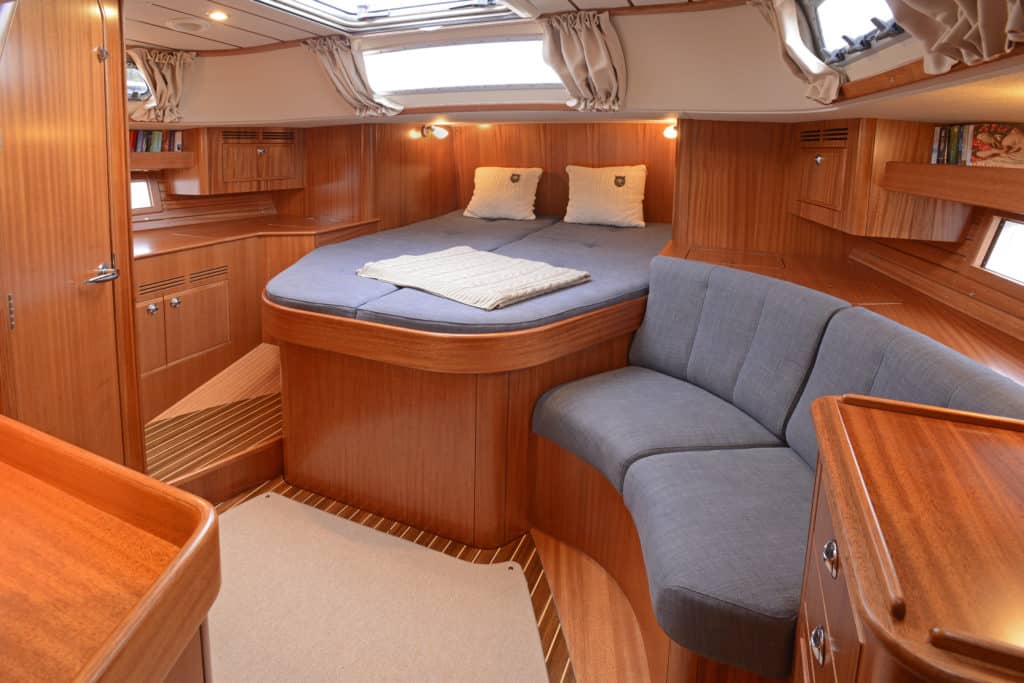
Mark Pillsbury is CW’s editor.






